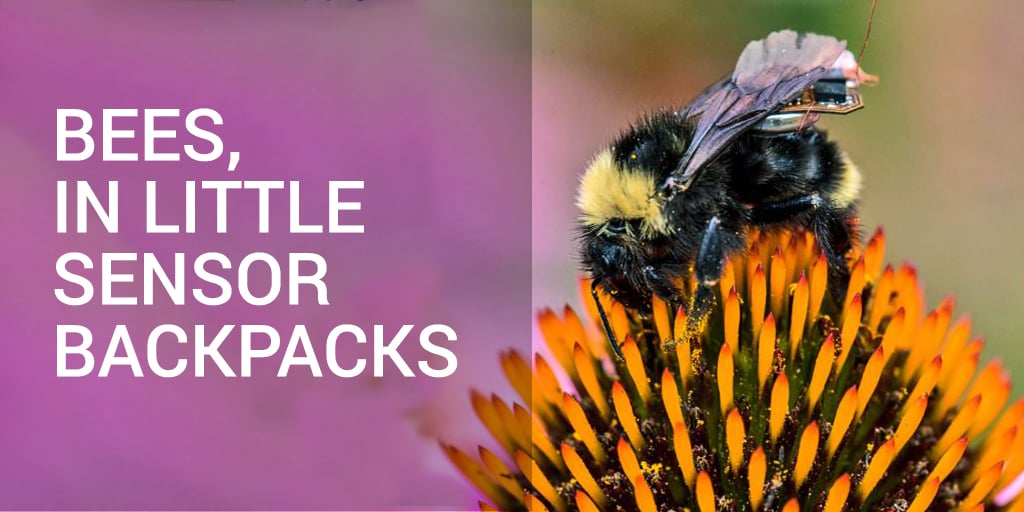
In February 2019, Transport Canada streamlined the regulations governing the use of drones flying above agricultural land. Farmers across the country rejoiced, and for good reason. It’s vital for agricultural professionals to know how their land—which these days can amount to thousands of thousands of acres—is faring: where there’s standing water, where there’s dryness, where pests may have made inroads. For many, being able to operate drones will save time, money, and resources, and may result in harvesting a better crop.
But researchers at the University of Washington have come up with something a little different—something that could rival the efficacy of drones, has fewer privacy implications, won’t interfere with aircraft, and doesn’t have to be recharged every half an hour.
Bees, in little sensor backpacks.
The UW research team has engineered a tiny array powered by a 7-hour battery that can be recharged every night while the bee-bearer returns to its hive. The 102mg backpack uploads all the information (up to 30kb) about temperature, humidity, and light intensity that it has collected while the bee visits its favorite fields.
Tracking crop health via bees brings added benefits to scientists and food producers alike: where bees go and the frequency with which they do so can tell us a lot about protecting and conserving the creatures themselves, on which so much of our agriculture depends. We can also glean important data about land management, crop rotation and location, genetic diversity, and pollination patterns. Further, bees can give us information at the level of individual plants rather than the more general overview provided by overhead drones. When you consider that, by many estimations, bees are responsible for 1 in every 3 bites of food that we eat, the more granular information we can get, the better.
For more information about this fascinating geospatial technology, Living IoT: A Flying Wireless Platform on Live Insects.

.jpg)




